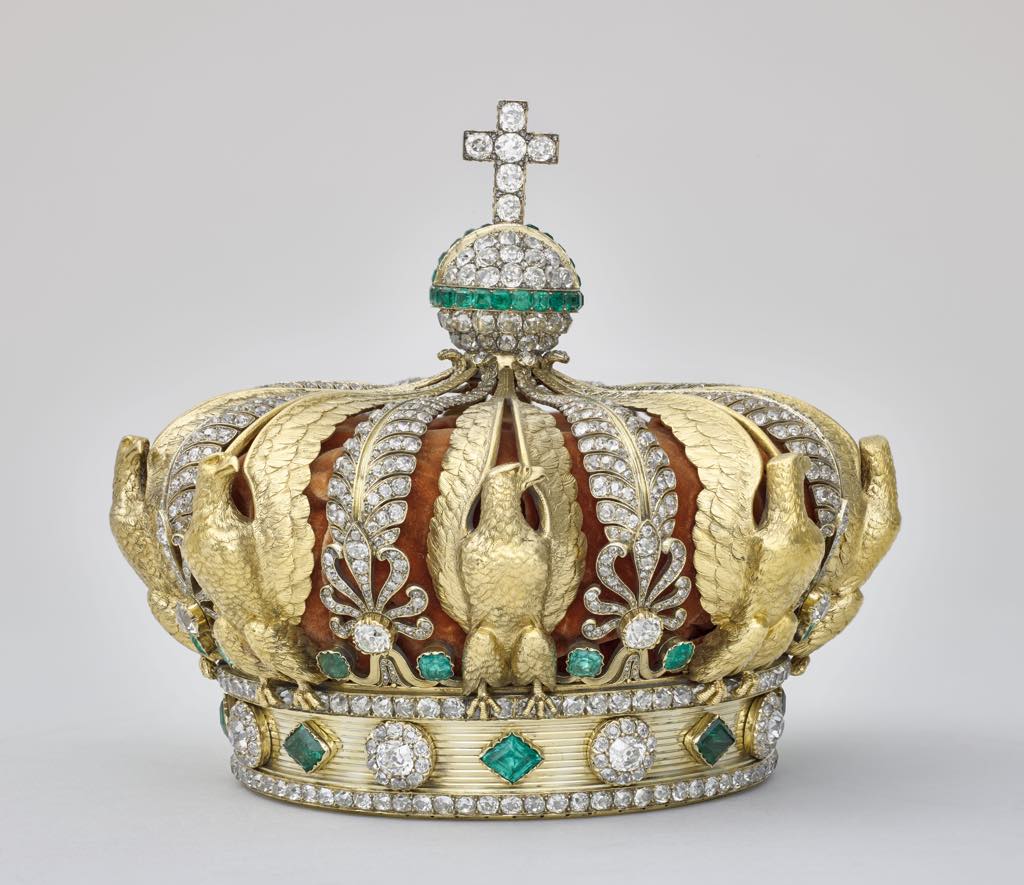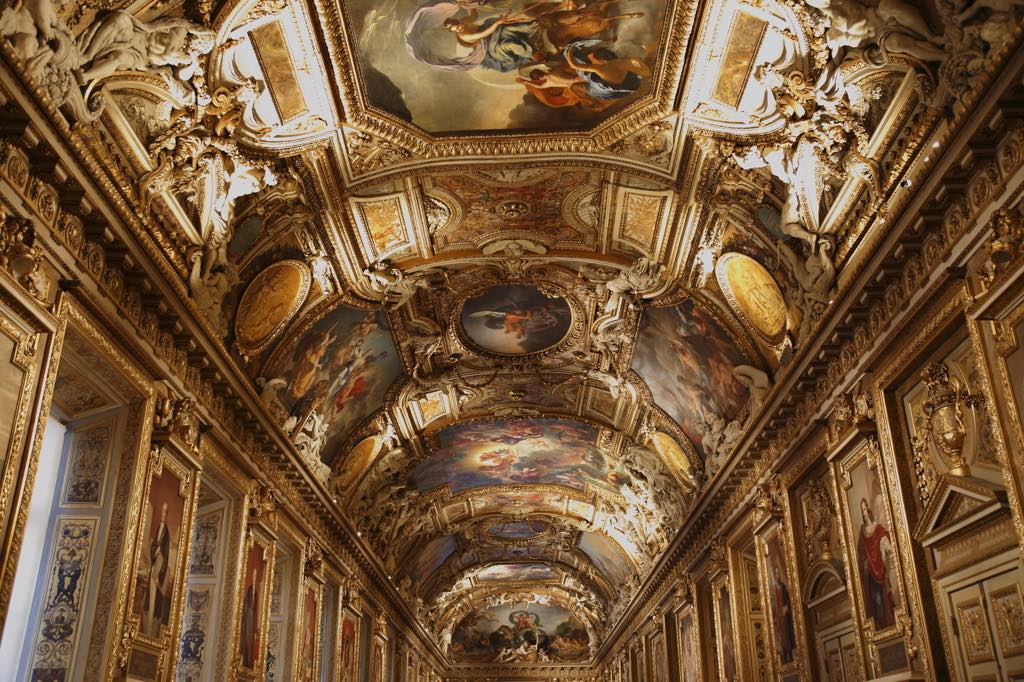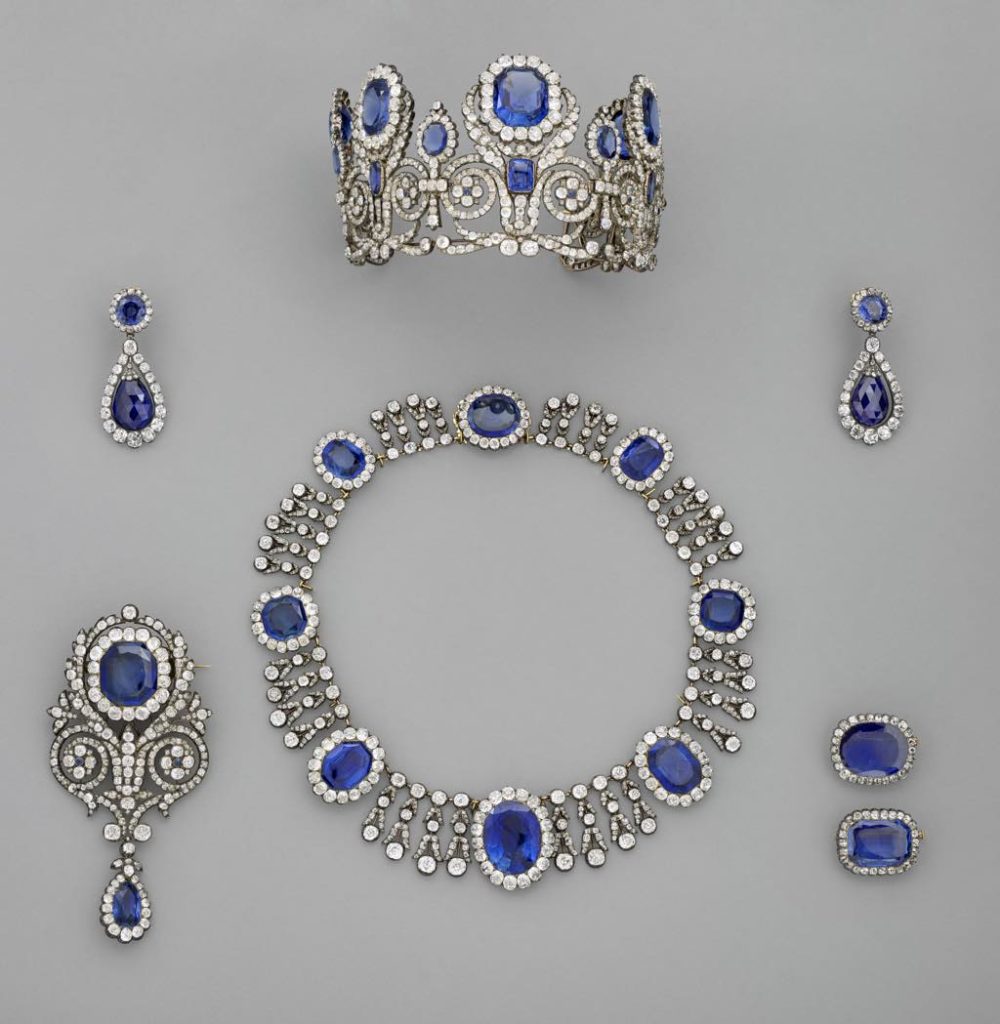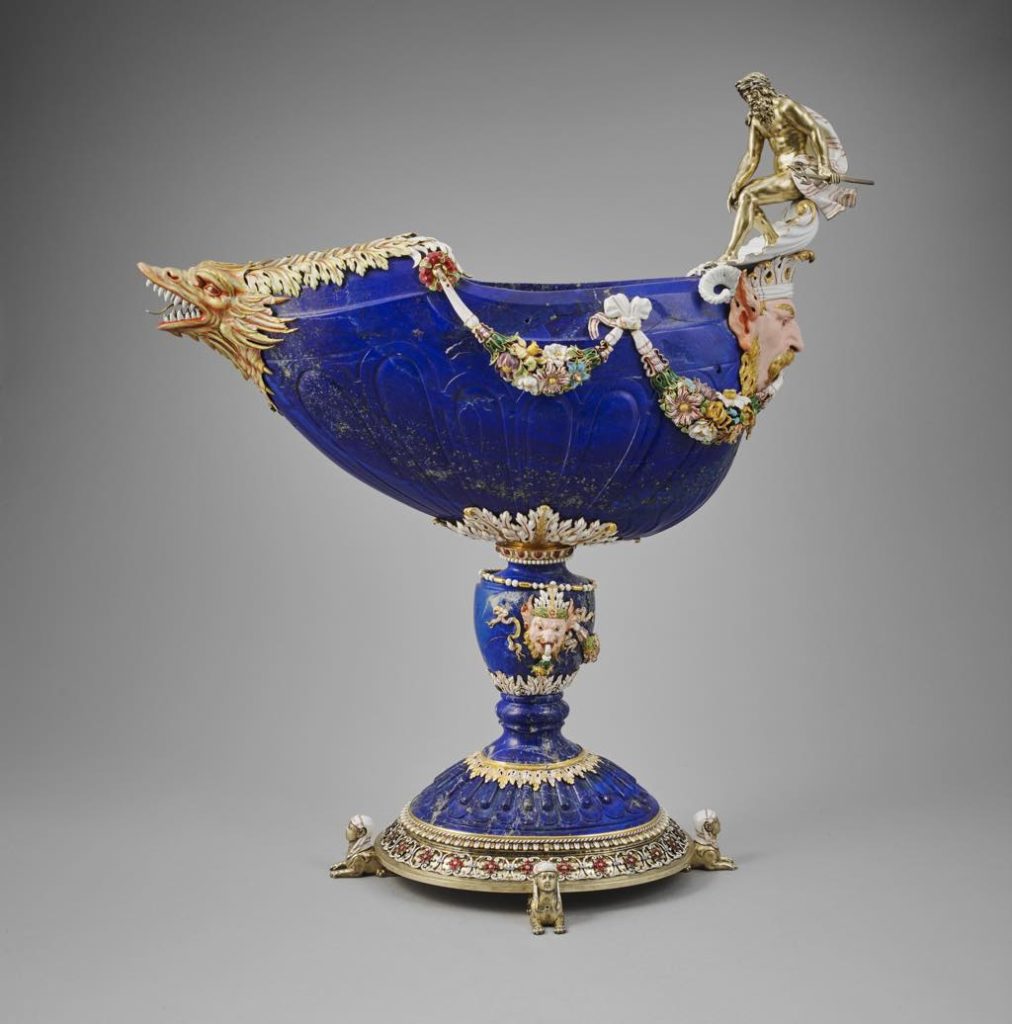
The king of France lost his head in 1793, and with him were lost all but one of the crowns that had sat on the heads of his Ancien Régime predecessors. What is left of the crown jewels of France can now be seen in the Louvre’s just-revamped and reopened Galerie d’Apollon.

The gallery offers a highly appropriate gilded setting for the royal glitter. Decorated under Louis XIV by his architect Louis Le Vau and artist Charles Le Brun, the gallery served as a model for the Hall of Mirrors in Versailles. That one remaining Ancien Régime crown, which belonged to Louis XV, sits in splendor in the first display case in the spectacular gallery, but its original 282 diamonds, 64 colored stones and 237 pearls were replaced by replicas not long after his coronation.
While most royal jewels disappeared with the Revolution, some of those on show here were bought back from the French Republic by the Louvre and others are relics of the First and Second Empires, so there are still a few spectacular pieces left to see.
The other French royal crown that escaped destruction (pictured at the top of this page) dates not from the Ancien Régime but from the Second Empire. It is so small that I didn’t notice it on my first tour of the three new display cases in which the royal jewels now throne, throwing off rainbows under their new high-tech lighting. The gold crown, which belonged to Empress Eugénie. wife of Napoleon III, is encircled by eight imperial eagles interspersed with diamond-encrusted laurel leaves and palmettes, and is topped with a diamond globe surmounted by a diamond cross. When it was exhibited at the 1855 World’s Fair, it competed successfully with that of the queen of England for attention.

There are a number of other bijoux to catch the eye. The comparatively discreet ensemble pictured here, which belonged to Queen Marie-Amélie, wife of Louis Philippe (reigned 1830-48), consists of Sri Lankan sapphires, diamonds and gold. Louis Philippe had purchased it in 1821, when he was still the Duc d’Orléans, from Hortense, the daughter of Joséphine de Beauharnais, Napoleon’s first wife. He probably had it revised and remounted before presenting it to his rather dour-looking queen, who wears it in an 1836 portrait by Louis Hersent.
Don’t miss the set of cunning red Morocco leather carrying cases (c. 1853) for the crown jewels, each one shaped like and sized to the precious object inside.

The rest of the sumptuous gallery is taken up with a display of Louis XIV’s collection of hardstone objects. The Sun King was not normally much of a collector, but he was mad about antique hardstone pieces and collected widely. Among those on display are some beautifully simple agate cups and the more ornate 16th-century lapis-lazuli vessel (with a setting dating from c. 1670) pictured above.
If like me, you were unaware that these jewels existed and could be seen in the museum, you are in for a scintillating surprise, but.remember, everything that glitters in this gallery is not gold – it may be diamonds or other precious or semiprecious stones or even paste, as in the case of Louis XV’s crown.
Favorite
How long is this jewel exhibit running? I probably will not be back in Paris until the fall.
It’s a permanent exhibition.